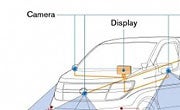An academic internet provides clues about ways to improve the commercial Internet.
 | ||
| Big sender: Internet2’s dynamic circuit network will help provide channels for large quantities of information to flow to and from academic research projects, such as CERN’s hadron collider, above. In the future, the technology may find commercial applications, such as for fast transfer of high-definition online video. Credit: CERN | ||
| Multimedia
|
Internet2, a nonprofit advanced networking consortium in the United States, is designing a new network intended to open up large amounts of dedicated bandwidth as needed. For example, a researcher wanting to test telesurgery technologies--for which a smooth, reliable Internet connection is essential--might use the network to temporarily create a dedicated path for the experiment. Called the dynamic circuit network, its immediate applications are academic, but its underlying technologies could one day filter into the commercial Internet, and it could be used, for example, to carry high-definition video to consumers.
"The idea here is to basically look at the network in a different way," says Rick Summerhill, CTO of Internet2. The Internet Protocol (IP) currently used for the Web breaks data into packets that are sent through fiber-optic cables to their ultimate destination. The packets don't have to take a common path through the network; routers act like way stations along the network, examining every packet individually and deciding where it should be sent next. The problem with this system is that large data transfers can clog the routers with packets waiting for direction, and if the packets don't make it to their final destination at the same time, the receiver may experience jitter--interruptions to the data stream that can produce skips in online video, for example.
Summerhill says that, using the dynamic circuit network, a researcher could set up a temporary connection to another location that would work like a phone call: the user's data would be carried directly to that other location, uninterrupted by the traffic of others sharing the network. The result is that large quantities of information could be transferred quickly and clearly.
The dynamic circuit network is really an enhancement of a traditional network, rather than a replacement. Internet2 still has a backbone that uses the standard IP common across the Web. What makes the dynamic circuit network different is that it uses a circuit-switched network, which can be set up so that all the packets follow the same path. Also, those circuits don't have to be in place permanently. Lachlan Andrew, a researcher at Netlab, at the California Institute of Technology, explains that a circuit-switched network determines a pathway for the entire stream of packets, so that at every way station, they can be sent on without having to be individually examined. "Internet2 is developing technology to communicate between nodes, find a path, and construct it," he says.
The idea of the dynamic circuit network, Summerhill says, is that these circuits can be set up on demand, so that traffic needing excellent quality of service can step out of the regular flow. Because data is sent down fiber-optic cables at different frequencies of light, he explains, data from the dynamic circuit network can coexist with IP data and wouldn't require new cable to be laid. Summerhill says that Internet2 is working on software that could eventually be built into network devices to control these different flows and to set up circuits when and where they are needed.
Among the current applications for the dynamic circuit network, Internet2 expects to facilitate the transfer of data from CERN's large hadron collider to researchers at other institutions, and it has done trials in which circuits are opened between the collider and the University of Nebraska. In the future, Summerhill says, the researchers hope that commercial applications develop from the technology. "Think of a network that provided hundreds or thousands of high-definition channels and also provided on-demand video capabilities," he says. He foresees a commercial network that needs both high bandwidth and high quality of service, like some current academic requirements. "The methods for supporting that network are under investigation," Summerhill says. Although right now, there are no commercial implementations, he notes that Internet2 works with commercial partners that might eventually be a conduit to bringing the technology into the ordinary Internet.
Clive Davenhall worked on software for academic circuit-switched networks in the United Kingdom, as part of his role as an engineer at the National e-Science Centre, in Edinburgh, which works to improve methods for conducting large-scale science research over the Internet. Davenhall says that, although people have been talking about dynamic circuit networks for a long time, this type of network hasn't had much of an impact on the commercial Internet, partly because of concerns about how it might function in an environment less controlled than academia. For example, if the average person could set up a dedicated circuit on demand, it might be possible to hog resources that could interfere with other users' experience.
Summerhill says that the dynamic circuit network is still in its early stages, and "still has some evolution to do." He recalls the time that IP wasn't considered ready for commercial applications. So far, four universities in four different regional networks are connected to the dynamic circuit network, says Lauren Rotman, public relations manager for Internet2. Rotman adds that it will be easy to add universities in regions that are already connected. The organization hopes to increase the dynamic circuit network's reach significantly in the coming year.
http://www.technologyreview.com/Infotech/20277/














